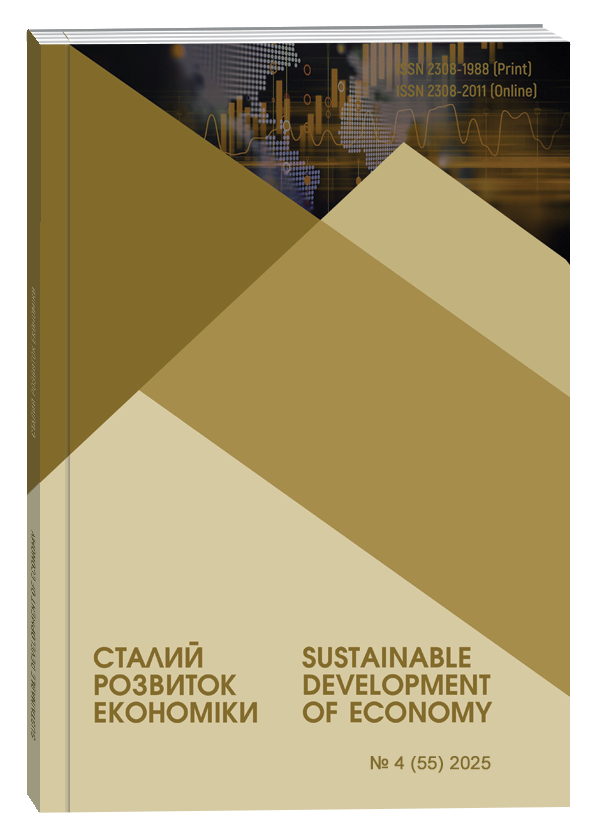CONCEPTUAL DEVELOPMENT OF DIVERSITY, EQUITY, AND INCLUSION POLICIES IN ORGANIZATIONS
Abstract
This article examines the evolutionary trajectory of diversity, equity, and inclusion (DEI) policies in organizational management. It demonstrates the transition from compliance-oriented practices and representational approaches to institutionalized inclusion, where DEI becomes embedded into the strategy, governance, and culture of organizations. The study introduces the conceptual framework of DEI-governance capability, defined as an integrated organizational capacity operating across four levels: strategic (equity-by-design principles in governance), processual (inclusive HRM routines in recruitment, adaptation, development, and retention), digital (algorithmic fairness, transparency, and accessibility in HRIS/ATS), and leadership (inclusive leadership and digital emotional intelligence). A key contribution of this article is the introduction of the concept of inclusion yield, a novel metric that captures the degree to which diversity is converted into tangible organizational outcomes such as innovation, productivity, employee retention, and resilience. Unlike traditional measures of representation, inclusion yield emphasizes the quality and effectiveness of inclusive processes. Particular attention is devoted to the challenges of digital environments, where the effects of DEI are amplified under conditions of high digital inclusion and the presence of leaders with advanced digital emotional intelligence. This synthesis highlights that the intersection of digital governance, inclusive leadership, and equity-driven HRM practices is critical for transforming diversity into sustainable organizational performance. The findings expand the academic understanding of DEI not as a set of isolated practices but as a systemic managerial competence. The article thus provides both theoretical novelty and practical implications, establishing a foundation for future research on measuring inclusion yield, auditing algorithmic fairness in HR technologies, and contextualizing DEI strategies in digital and hybrid work environments.
References
Barney J. Firm resources and sustained competitive advantage. Journal of Management. 1991. Vol. 17. № 1. P. 99–120.
Blau P. Exchange and power in social life. New York: Wiley. 1964. 311 p.
Ely R. J., Thomas D. A. Cultural diversity at work: The effects of diversity perspectives on work group processes and outcomes. Administrative Science Quarterly. 2001. Vol. 46. № 2. P. 229–273.
Edmondson A. Psychological safety and learning behavior in work teams. Administrative Science Quarterly. 1999. Vol. 44. № 2. P. 350–383.
DiMaggio P. J., Powell, W. W. The iron cage revisited: Institutional isomorphism and collective rationality. American Sociological Review. 1983. Vol. 48. № 2. P. 147–160.
Crenshaw K. Demarginalizing the intersection of race and sex. University of Chicago Legal Forum. 1989. Vol. 1989. № 1. P. 139–167.
Винничук, Р. О., Юрченко, Г. М. Особливості управління інклюзивними колективами в організації. Економіка та управління підприємствами. 2019. № 27. C. 115–122.
Ситник, Й. С., Юрченко, Г. М. Сутнісна характеристика феномену «соціальне підприємство», що діє за бізнес-моделлю працевлаштування. Економіка та суспільство. 2021. № 34. C. 135–141.
Dobbin F., Kalev A. (2016). Why diversity programs fail. Harvard Business Review. 2016. Vol. 94. № 7–8). P. 52–60.
Raghavan M., Barocas S., Kleinberg J., Levy, K. Mitigating bias in algorithmic hiring: Evaluating claims and practices. Proceedings of the 2020 Conference on Fairness, Accountability, and Transparency (FAT). 2020. P. 469–481.
Козак Ю. Соціальна інклюзія як фактор розвитку людського капіталу в Україні. Соціально-трудові відносини: теорія та практика. 2020. № 1(19). С. 77–83.
Шульга І. Інклюзивні практики у вітчизняному HR-менеджменті: виклики та перспективи. Менеджмент та підприємництво в Україні: етапи становлення і проблеми розвитку. 2022. № 2(1). С. 94–103.
Barney J. (1991). Firm resources and sustained competitive advantage. Journal of Management, vol. 17(1), pp. 99–120.
Blau P. (1964). Exchange and power in social life. New York: Wiley, 311 p.
Ely, R., Thomas D. (2001). Cultural diversity at work: The effects of diversity perspectives on work group processes and outcomes. Administrative Science Quarterly, vol. 46(2), pp. 229–273.
Edmondson A. (1999). Psychological safety and learning behavior in work teams. Administrative Science Quarterly, vol. 44(2), pp. 350–383.
DiMaggio P., Powell W. (1983). The iron cage revisited: Institutional isomorphism and collective rationality. American Sociological Review, vol. 48(2), pp. 147–160.
Crenshaw K. (1989). Demarginalizing the intersection of race and sex. University of Chicago Legal Forum, vol. 1989(1), pp. 139–167.
Vynnychuk R., Yurchenko H. (2019). Osoblyvosti upravlinnia inkliuzyvnymy kolektyvamy v orhanizatsiiakh [Features of managing inclusive teams in organizations]. Ekonomika ta upravlinnia pidpryiemstvamy, vol. 27, pp. 115–122. (in Ukrainian)
Sytnyk Y., Yurchenko H. (2021). Sutnisna kharakterystyka fenomenu “sotsialne pidpryiemstvo”, shcho diie za biznes-modeliu pratsevlashtuvannia [Essential characteristics of the phenomenon of “social enterprise” operating under an employment-based business model]. Ekonomika ta suspilstvo, vol. 34, pp. 135–141. (in Ukrainian)
Dobbin F., Kalev A. (2016). Why diversity programs fail. Harvard Business Review, vol. 94, pp. 52–60.
Raghavan M., Barocas S., Kleinberg J., Levy K. (2020). Mitigating bias in algorithmic hiring: Evaluating claims and practices. Proceedings of the 2020 Conference on Fairness, Accountability, and Transparency (FAT), pp. 469–481.
Kozak Y. (2020). Sotsialna inkliuziia yak faktor rozvytku liudskoho kapitalu v Ukraini [Social inclusion as a factor of human capital development in Ukraine]. Sotsialno-trudovi vidnosyny: teoriia ta praktyka, vol. 1(19), pp. 77–83. (in Ukrainian)
Shulha I. (2022). Inkliuzyvni praktyky u vitchyznianomu HR-menedzhmenti: vyklyky ta perspektyvy [Inclusive practices in Ukrainian HR management: Challenges and prospects]. Menedzhment ta pidpryiemnytstvo v Ukraini: etapy stanovlennia i problemy rozvytku, vol. 2(1), pp. 94–103. (in Ukrainian)


